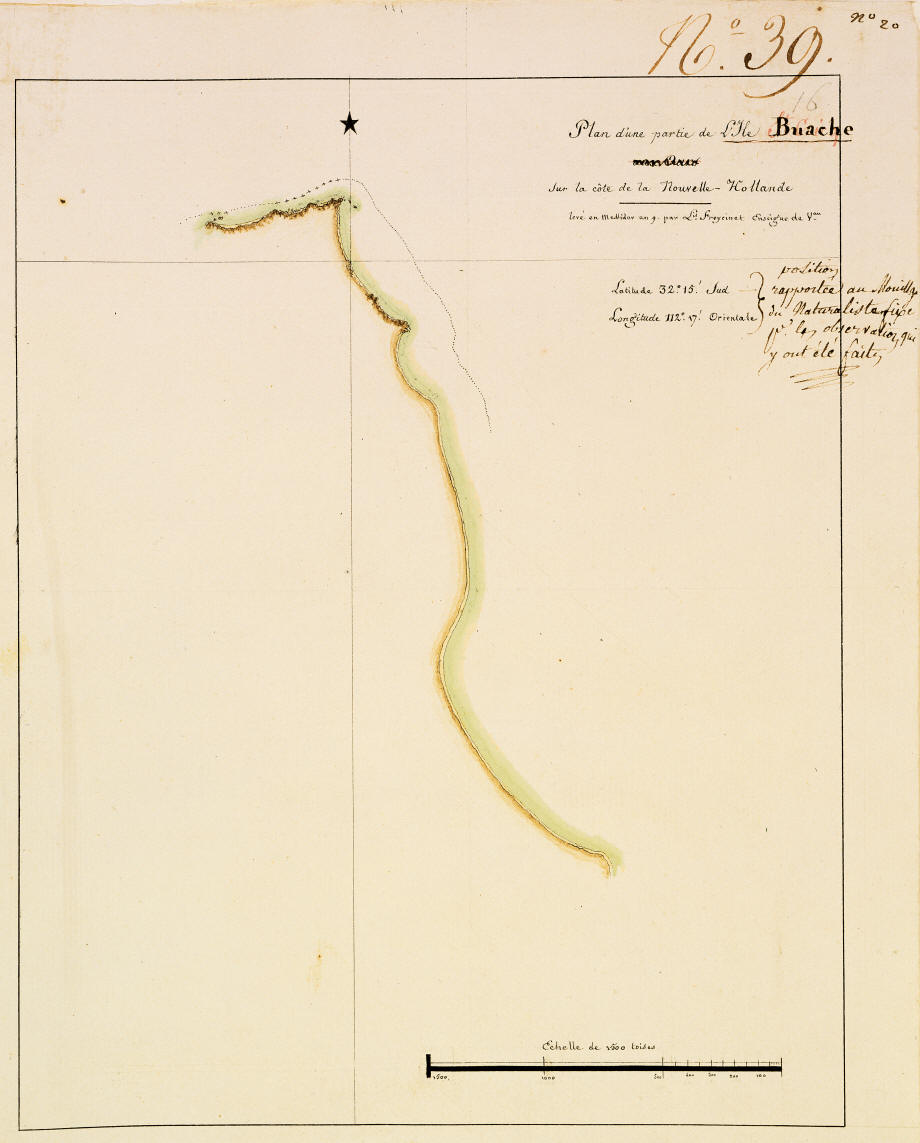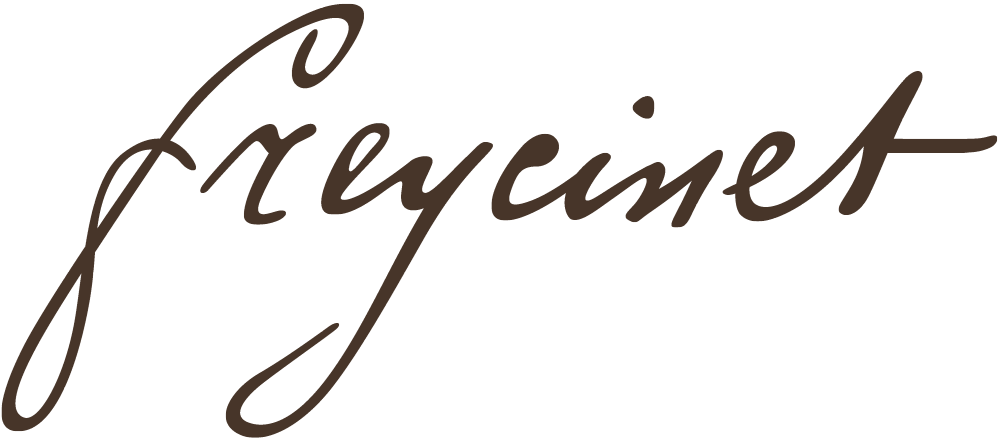Garden Island
An expedition including Lieutenant Pierre-Bernard Milius and zoologist Stanislas Levillain left the French vessel Naturaliste on 18 June 1801 to explore the islands to the south east of Rottnest Island off the Western Australian coast. After passing Carnac Island, which they described as small and arid, they reached what is now known as Garden Island.
The sailors, upon going ashore, were greeted by a large number of sea lions who discouraged the Frenchmen from encroaching upon their territory. "This audacity" reported Louis de Freycinet in the official account, "cost them dearly; carnage of the creatures ensued." Lieutenant Milius did some surveying and also noted that the island was thickly wooded, with rich soil suited to agriculture. Soon, however, the party was forced by winds from the north-northwest to set sail and, after a night of futile tacking about in violent seas, their boat was wrecked on the coast of the mainland. A plaque at Cottesloe Beach now marks the place thought to be where the men were wrecked. They spent six days ashore until a boat was sent from the Naturaliste to rescue them. During this period they fell ill after eating the nuts of the zamia palm which are poisonous unless specially prepared.
On 23 June, Joseph Bailly, mineralogist, made another excursion to Garden Island to report on its geological composition. On the 24th a party under the command of sub-lieutenant Jacques Saint Cricq was sent to the island to hunt for sea lions. Louis de Freycinet was part of this group, who anchored overnight near the island and caught a number of sea lions the next day.
"I amused myself in the afternoon by making a map of the part of the island that we landed on" - Louis de Freycinet

An expedition including Lieutenant Pierre-Bernard Milius and zoologist Stanislas Levillain left the French vessel Naturaliste on 18 June 1801 to explore the islands to the south east of Rottnest Island off the Western Australian coast. After passing Carnac Island, which they described as small and arid, they reached what is now known as Garden Island.
The sailors, upon going ashore, were greeted by a large number of sea lions who discouraged the Frenchmen from encroaching upon their territory. "This audacity" reported Louis de Freycinet in the official account, "cost them dearly; carnage of the creatures ensued." Lieutenant Milius did some surveying and also noted that the island was thickly wooded, with rich soil suited to agriculture. Soon, however, the party was forced by winds from the north-northwest to set sail and, after a night of futile tacking about in violent seas, their boat was wrecked on the coast of the mainland. A plaque at Cottesloe Beach now marks the place thought to be where the men were wrecked. They spent six days ashore until a boat was sent from the Naturaliste to rescue them. During this period they fell ill after eating the nuts of the zamia palm which are poisonous unless specially prepared.
On 23 June, Joseph Bailly, mineralogist, made another excursion to Garden Island to report on its geological composition. On the 24th a party under the command of sub-lieutenant Jacques Saint Cricq was sent to the island to hunt for sea lions. Louis de Freycinet was part of this group, who anchored overnight near the island and caught a number of sea lions the next day.
"I amused myself in the afternoon by making a map of the part of the island that we landed on" - Louis de Freycinet

Above:
Map of a portion of the coastline of Garden Island, drawn by Louis
de Freycinet in 1801
The island underwent two name changes before the official
publication of the maps. The first name assigned to the island,
which has been crossed out, was Ile aux ours, after the ours "sea
bears" (or sea lions in English) that were plentiful on the island.
This name was crossed out in red ink and replaced by "St Cricq", in
honour of Jacques Saint Cricq, sub-lieutenant on the Naturaliste.
This in turn was also replaced by “Buache", presumably either for
Philippe Buache, a celebrated eighteenth-century French geographer,
or for his nephew Jean-Nicholas, also a geographer at the time of
the Baudin expedition.


